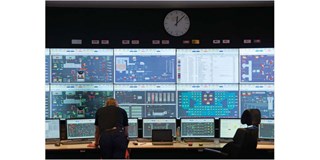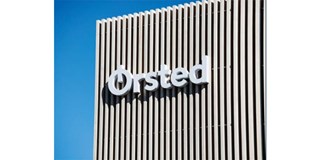^ Ørsted’s H2RES project in Denmark
Article By Lucien Joppen
___
In May 2021, Ørsted (formerly known as DONG Energy, see box text), started with the construction of the 2 MW H2RES offshore wind-to-hydrogen project in Denmark, for which the company reached a FID in January 2021.
According to Anders Nordstrøm, Vice President and Head of Ørsted’s hydrogen and PtX activities, “H2RES will be a small, but very important first step in realising our large ambitions for renewable hydrogen, which has fast proven itself as a centre piece in the green transformation of the European economy to net-zero emissions by 2050.”
Copenhagen
The 2 MW H2RES will be built on Ørsted’s premises on Avedøre Holme in Copenhagen, using the company’s two 3.6 MW offshore wind turbines at the offshore location to power hydrogen production, and will investigate how to best tap into a fluctuating power supply from offshore wind.
The company has teamed up with Denmark based Green Hydrogen Systems (GHS) as the supplier of electrolysis technology for the demonstration project. Along with Green Hydrogen Systems, partners on the project include Everfuel Europe, NEL Hydrogen, DSV Panalpina, Hydrogen Denmark, and Energinet Elsystemansvar.
High efficiency
The facility will produce up to around 600 to 1,000 kilograms of green hydrogen a day, which will be used to fuel zero-emission road transport in the Greater Copenhagen area and across the whole island of Zealand. H2RES is expected to produce its first hydrogen in late 2021. As mentioned before, GHS will supply the electrolyser technology for H2RES.
GHS uses pressurized alkaline electrolysis, a technology which has a long history and track record in the chemical industry. With growing demand for energy applications, alkaline electrolysis is attracting attention, and advanced electrolysers have been developed. The direction of development is toward higher efficiency by applying high-temperature and high-pressure operation (Compendium of hydrogen energy, Woodhead, 2015).
From an economic viewpoint, the lifetime of these systems, on the order of several thousands of hours, can be considered satisfactory for continuous operation (Woodhead, 2015).

Compared with other modes of electrolysis, alkaline electrolysis (AEL) requires less ex pensive materials such as steel and nickel. Therefore, research on AEL has intensified in the last years. With a higher share of renewable energy in the power grid, AEL may be essential for load-balancing and large-scale hydrogen production (Woodhead 2015).
However, large-scale application demands low cost and high effectiveness. Therefore, every component of an AEL system needs to be optimized, according to several publications on this topic. While many studies focused on fa vorable electrocatalysts for lower overvoltages at the electrodes, the interest in the development and optimization of other cell components, especially separators, has accelerated.
Offshore green hydrogen projects Europe
H2RES is not the only offshore green hydro gen project that is going to be instrumenta in gaining insights about the techno-economical aspects of this technology.A Dutch consortium of Gasunie, Groningen Seaports and Shell Nederland announced in 2020 that they intend to launch the NortH2-project: the production of green hydrogen using renewable electricity generated by a mega offshore wind farm (3 to 4GW in 2030). Additionally, it has the ambition to grow to about 10GW around 2040.
Green hydrogen production, initially in the Eemshaven and later possibly also offshore, is expected to be around 800,000 tonnes per year by 2040.
Another company, British ERM Dolphyn, aims to couple floating wind turbines – located in deepwater – with desalination equipment to remove salt from seawater, and electrolysers to split the resulting freshwater into oxygen and the sought after hydrogen. ERM has been developing the design of a 2MW Dolphyn prototype unit. However, the project has moved towards a 10MW commercial demonstrator project offshore of Aberdeen, Scotland.
In France, Lhyfe and Chantiers de l’Atlantique (shipyard) announced plans to install the 2 MW capacity floating wind turbine Floatgen. This test site, located off the coast of Le Croisic will be crucial to validate the feasibility of offshore hydro gen production, with plans to expand to a system ranging from 10 MW to “several hundreds of MW of carbon-neutral power in 2024”.



